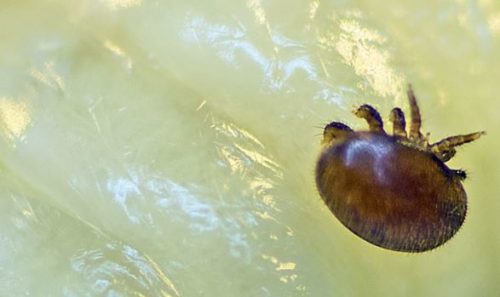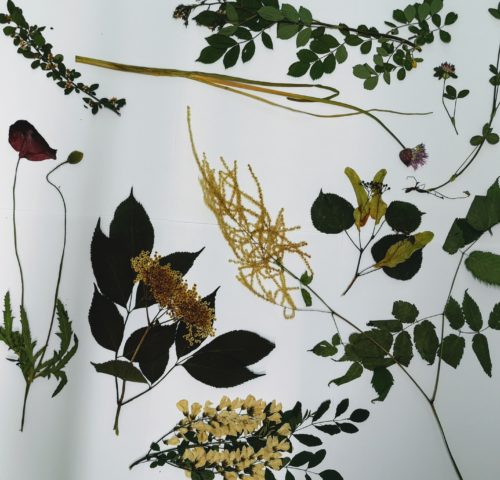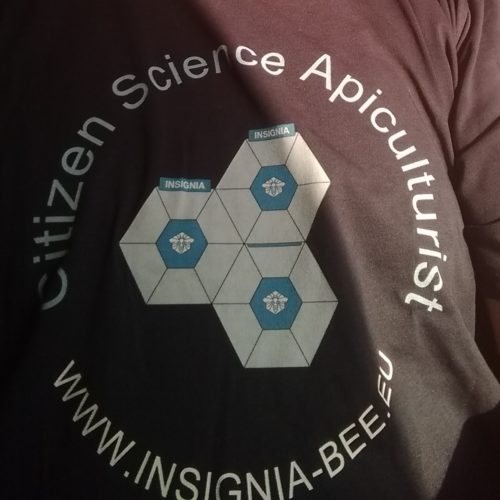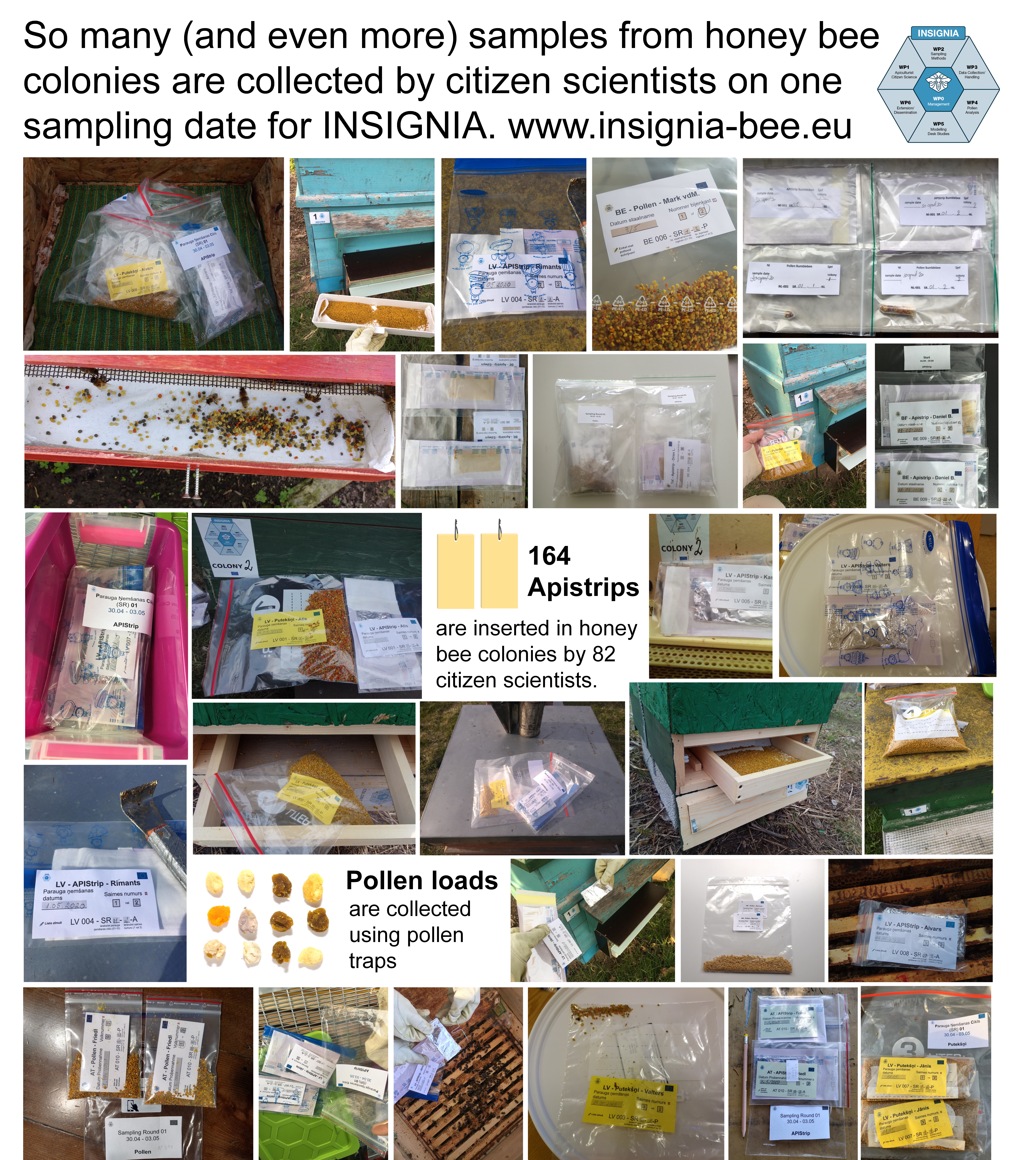
Why talk about a parasite? Because only bee colonies in balance are good bioindicators.
All the INSIGNIA colonies are taken care of by our Citizens Scientist. They run the colonies as they use to. The aim is to supply a pollination service og create a honey production. The, probably, biggest treat against the honeybee colonies is the parasitic mite Varroa destructor. The mite is from 1-1,5 mm. Rather small. Varroa is living on the honeybees and does multiply in the sealed brood of the honeybees. It only bread on honeybees.
The INSIGNIA HONEYJAR

Insignia is more than strips and pollen. Our colonies do also produce the most delicious honey. In Denmark, this year’s honey harvest seems until now to become good. The INSIGNIA 1 colonies gave a harvest of spring honey of around 20 kg each. The honey was harvested around the 12th of June. That is in the blooming time of the oilseed rape. Give a very creamy and tasteful honey. Other exciting flowers are expected to be in as well. The fruit trees this year looks very nice and productive a well. Dandelion was flowering very intense and hawthorn is very smelly and dominating at the end of the spring flow. Anyway, love this honey. And now we made a special edition for our colleagues around europe. By the way, the metabar coding of the pollen sampling will confirm above later in the season.

Some of the team from the University of Almaria presenting creamed honey from Denmark.
INSIGNIA on Spanish TV!
The INSIGNIA project has drawn the attention of the Spanish TV channel Canal Sur! Two of their reporters visited the lab in Almería and asked some questions about the APIStrips and the project progress. Two days later, a short description of the work performed by the INSIGNIA group was broadcast on the news with a small part of the interviews to the Almería team.
Sample pick-up and delivery in Austria
We try to maintain cool chain of samples collected by citizen scientists – which means we do visit citizen scientists’ locations with a cool bag. The first big tour 2020 brought me to three participating beekeepers. Always a good option to see apiaries in the city or in the woods. Johann on the other hand benefitted of the nice weather and brought his samples 60 km by motorbike to the university in Graz!
Collecting plants for science!
All INSIGNIA samples are analysed for pesticides residues and pollen diversity.
Last year, it was only possible to assign latter to the taxonomic family level, as the reference DNA database was not reliable enough to draw conclusions on botanical genus or species level. To complete the database, the colleagues from the Instituto Politécnico de Bragança in Portugal asked us to collect fresh plants, known to be important for bees.
No sooner said than done! The University of Graz sampled more than 60 plant species, herbarized them and will send it to Alice Pinto and her team in Portugal this week for ITS 2 metabarcoding. The figure below shows Papaver rhoeas, Cotoneaster horizontalis, Allium schoenoprasum, Tilia cordata, Rosa multiflora, Trifolium pratense, Sambucus nigra, Aruncus dioicus and Robinia pseudoacacia. All important melliferious plants for bees.
Hopefully, this enables the assignment of pollen to lower taxonomic levels in year two of INSIGNIA.

Kristina Gratzer
Simple INSIGNIA estimation of colony size through beelanes
To estimate the colony strength, citizen scientists count the occupied beelanes in each hive for every sampling round.


Robert Brodschneider & Kristina Gratzer
Get to know Austrian citizen scientists #3
Austrian citizen scientist Matthias is proud to keep bees in all 23 city disctricts of Vienna! For INSIGNIA he has chosen an apiary at the eastend of the city. His beekeeping operation https://www.wiener-bezirksimkerei.at/ indeed offers different honeys from all boroughs. During sampling round 2, he filmed himself taking samples on one of the INSIGNIA hives!
Continue reading “Get to know Austrian citizen scientists #3”
So many apiaries!
Dear participant of the Insignia study 2020

In my virtual meetings with the beekeeper citizen scientists, I am asked sometimes: “what is in it for me?” A fair question. Let me explain what is in it for you… You will sample pollen and APIStrips from two colonies on ten occasions. Pollen and APIStrips will be analyzed at the apiary level; pollen for botanical identity and the APIStrips for pesticide residues in the hive. These results will be shared with you and will give you the information about what plants your bees have collected pollen from, and what pesticides your bees have brought along with the pollen and nectar. The latter is qualitative, meaning yes/ no pesticide present in the APIStrip. We detect different amounts but what this means for the actual exposure of your bees in the hive can’t be told with these data. This requires another study set-up which hopefully can be done in the future. Now the reward in monetary terms. Each APIStrip with its analysis costs about €200 each, and each pollen analysis also costs about €200. So together this is €400, with transport, administration, quality control, statistics and reports not included. A very cautious estimate of the costs per beekeeper for Insignia will be 10 sampling x € 400 plus extra costs = €4,500. 60% of this is paid by the European Union = € 2,700, the remainder €1,800 is paid by your national coordinator’s institute and you will have this information about your bees for free. Continue reading “Dear participant of the Insignia study 2020”


